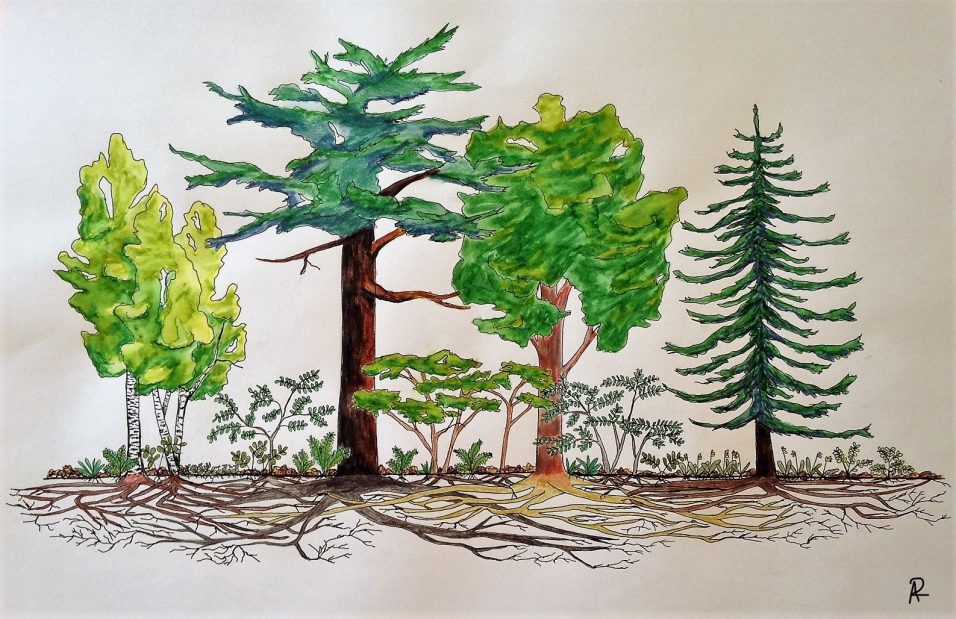What’s Growing at the Harriet Irving Botanical Gardens
By Adrien Green, Head Gardener and Educator
In our beautiful forest community, when we stand amid the trees we often feel the sensation of belonging, or that we are a part of something much larger than ourselves. Humans have received many gifts from trees over millennia including food, lumber for building, heating for homes and oftentimes metaphors conveying strength, flexibility and generosity. Trees can make us feel humble and connected all at once.
In the spirit of Deep Roots, let’s imagine what lies beneath the trunks of the trees we see in the forest around us. When a tree seedling emerges in the forest, the first tender root to appear is called the “radicle,†something that all vascular plants share. It grows downward into the earth anchoring the hopeful new tree. Quite quickly, lateral roots begin to branch out horizontally exploring for pockets of nutrients and moisture to nourish the growing tree. Contrary to popular belief, roots do not actively grow towards anything, but probe the soil developing and maturing only under favorable conditions. Roots, just like all living things, can only grow where the resources of life are.
A tree can have kilometres of roots, most of them found within the top two metres of soil. The amount of biomass that one tree creates in the earth is absolutely staggering. There is more surface area of a tree found in the soil than there is visible above ground, including both sides of all leaves! Not only does this impressive matrix of root growth anchor and stabilize a tree as it ages, it helps support the surrounding trees in the forest as roots become woven together over time. Furthermore, roots serve a crucial role in forest health and ecology. By literally holding the forest floor together, roots ensure that soil and nutrients remain in place during heavy rains and flood events. This directly supports the growth of small, herbaceous plants which form the base of the local food chain.
Perhaps we can feel kinship with towering trees in the forest because of our surprising similarities. We root ourselves into the places we live: growing, changing, and exploring. We also weather times of hardship and scarcity supported by our neighbours and relatives. Over time we become entwined with others fostering deep connections and supporting the fabric of our unique community. These are the “unseen†things that make a forest diverse and strong. These are the same unseen things that allow us as individuals to become creative, inspired, musical, and artistic. By the very nature of our roots we can grow to our full potential while supporting others around us.
As we celebrate the immense musical talent we are fortunate to be surrounded by, let us remember the lessons and gifts we receive from all trees, large and small. Create some time to strum your ukulele or guitar in the shade of a tree. Sing songs around a fire while wood burns, warming you and your loved ones. Trees are the root masters of the community, so in their honour let us all go deep!
Harriet Irving Botanical Gardens
Acadia University
botanicalgardens.acadiau.ca
